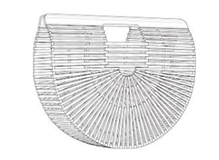In the context of an opposition proceeding, the US Court of Appeals for the Federal Circuit upheld a Trademark Trial & Appeal Board (Board) refusal to register a trademark based on likelihood of confusion with a famous but expired mark, notwithstanding the applicant’s assertion of abandonment of the mark by the original registrant. Tiger Lily Ventures Ltd. v. Barclays Capital Inc., Case Nos. 21-1107;- 1228 (Fed. Cir. June 1, 2022) (Lourie, Bryson, Prost, JJ.)
Tiger Lily sought to register the word mark LEHMAN BROTHERS for beer and spirits and for bar services and restaurant services. Barclays, whose Lehman Brothers marks had expired, opposed the applications based on likelihood of confusion. Tiger Lily argued that Barclays had abandoned the mark and filed an opposition to Barclays’ application to register the work mark LEHMAN BROTHERS. The Board sustained Barclays’ oppositions on the grounds of likelihood of confusion and dismissed Tiger Lily’s opposition. Tiger Lily appealed.
Tiger Lily challenged the Board’s decision, arguing that the Board erred in its determination that Barclays did not abandon its rights in the LEHMAN BROTHERS mark and, relatedly, that Barclays established priority with respect to the LEHMAN BROTHERS mark in its own application. Tiger Lily also argued that the Board erred in finding that its proposed mark for beer and spirits and its proposed mark for bar services and restaurant services would cause a likelihood of confusion with Barclays’ LEHMAN BROTHERS mark.
Addressing the issue of abandonment, the Federal Circuit explained that “there are two elements to a claim for abandonment: (1) nonuse; and (2) intent not to resume use,” and “even limited use can be sufficient to avoid a finding that use of a mark has been ‘discontinued.’” The Court noted that Tiger Lily acknowledged that Barclays had used the mark “continuously in the course of winding up the affairs of at least one Lehman Brothers affiliated company” and thus failed to prove nonuse. Whether Lehman Brothers would exist after bankruptcy proceedings ended was immaterial.
On the issue of likelihood of confusion and the DuPont factors, the Federal Circuit found that “because the LEHMAN BROTHERS mark has achieved a high degree of fame, it is afforded a broad scope of protection.” Tiger Lily attempted to draw a distinction between “consumer recognition” as compared with “goodwill” as a factor and argued that it was actually trying to trade on the “bad will” associated with the mark. The Court found “no legal support for [this] subtle distinction.” The Court concluded that “Tiger Lily’s attempts to capitalize on the fame of the LEHMAN BROTHERS mark weighs in favor of finding a likelihood of confusion,” and that the Board’s findings on the remaining factors were supported by substantial evidence.
read more


 Subscribe
Subscribe



